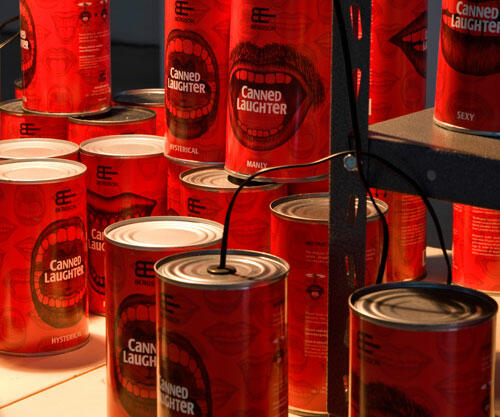Proyecto Juárez
Matadero Centro de Creación Contemporánea, Madrid
The sad reputation that has pursued Ciudad Juárez in recent times, marked by a social and economic reality which, even though peculiar to that city, can be witnessed in other large Mexican urban centers along the border with the United States, is present on a daily basis in the newspapers or in the news broadcasted all over the world. If in past decades Tijuana or Nuevo Laredo were the names on the lips of journalists and reporters, the Santa Teresa that Roberto Bolaño described boldly in 2666, the city that has become the backyard of US industry, and whose streets and landscapes exude tragedy and death, is now the protagonist. The war against drug trafficking, the inefficacy and reluctance of the police in attempting to solve that which the Mexican academician Marcela Lagarde has termed “femicides”, are addressed from an infinity of perspectives, as study cases, as sources of information or as elements to denounce these crimes in every possible way.

“Proyecto Juárez” forms part, partially, of the idea of examining and reflecting on − based on the fundamental elements of this reality − the world that opens up before the eyes of the inhabitants of this city. Two vital facts − the massive and continuous killing of women, and the laboratory of the neo-liberal model and control of institutional powers into which this urban nucleus has been transformed − are the points of departure for several invited artists, most of them Mexican, to work on and investigate these phenomena. A total of eleven works resulting from these sojourns, were exhibited in Madrid with the aim of creating a map of denouncement and artistic experimentation, with more or less activism or empathy, but always from a critical point of view, another turn of the screw in the exposure of the aura of infamy that can be perceived in the largest trans-boundary community in the world.
Carlos Amorales (Mexico F.D, 1970) proposed a global identity for the project starting out from the concept of spider web and creating a press release background which reproduced the logotype created for the occasion −a reference to a cross and a police badge. Gustavo Artigas (Mexico .F.D., 1970) presented in Censo testimonies compiled in several of the most depressed neighborhoods in the city. The aim of this action was to show the aspirations and the reality of several groups of residents in these areas. Antonio de la Rosa (Madrid, Spain, 1970) voluntarily underwent breast implant surgery as a way to inquire into − through gender confrontation and his recurrent visits to the city − the origin of male chauvinist violence. Unable to find relevant data, he showed the scars left by the surgery to document the action. Also included in the show were the testimonies of the action that Santiago Sierra (Madrid, Spain, 1966) carried out in 2006, just a few meters away from the border, where he excavated the word “sumisión” (submission), intending to set fire to the letters and film them from an aircraft, although the authorities did not allow this procedure, leaving the action incomplete.
Especially noteworthy among the proposals directly related to the homicides in Ciudad Juárez was the work by Artemio (Mexico .F.D., 1976): Sin título (retrato de mujeres en Juárez), which consisted in excavating a hole to extract a volume of earth equivalent to the total weight of the bodies of women found. Later, the earth − which is shown in the center of the exhibition space − was transported to the capital. Based on the unresolved murders of the women whose bodies were found in Campo Algodonero, the Spanish group “Democracia” proposed putting up posters all over the city featuring the mottos “Estado asesino” (“Murder State”) and “Libertad para los muertos” (Freedom for the Dead”). Enrique Ježik (Córdoba, Argentina, 1961) paid homage to the victims through a version of Robert Smithson´s work, Asphalt Rundown, in which the asphalt removed by a truck was replaced with organic remains.
The socio-economic issue was the point of departure for Yoshua Okón (Mexico F.D., 1970), who revealed the fundamental role of laughter in the television and entertainment industry, creating a maquiladora (an assembly plant that is exempt from taxes since what it manufactures is exported elsewhere) that produced canned laughter, through which he materialized labor relations, economic submission, benefits and productivity. Artur Zmijewski (Warsaw, Poland, 1966) filmed 24 hours in the daily life of an immigrant woman worker, while Ramón Mateos (Madrid, Spain, 1968) presented a video installation based on the action he carried out on the border − a choir of volunteers sang Juan Gabriel’s “Se me olvidó otra vez” − in an attempt to exert an influence on the physical aspects of these divisions. Iván Edeza (Mexico F.D., 1967) referred to the demolition of identity spaces in the city with the aim of achieving a regeneration in urban planning, and proposed an advertising campaign in a style similar to the one used in the posters featuring the missing persons.
-
 Risas enlatadas (detalle), 2009. Cans, TV sets, table, metal shelves, projector, various objects. Dimensions variable. Latas, televisiones, mesa, estanterías de metal, proyector, varios objetos. Dimensiones variables.
Risas enlatadas (detalle), 2009. Cans, TV sets, table, metal shelves, projector, various objects. Dimensions variable. Latas, televisiones, mesa, estanterías de metal, proyector, varios objetos. Dimensiones variables.




